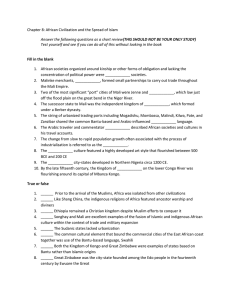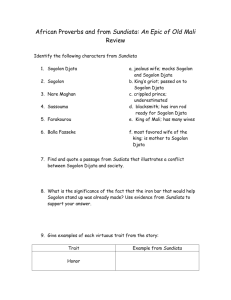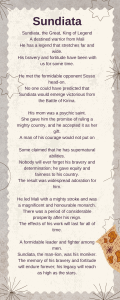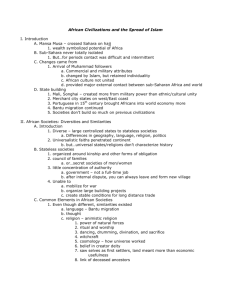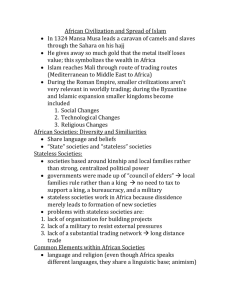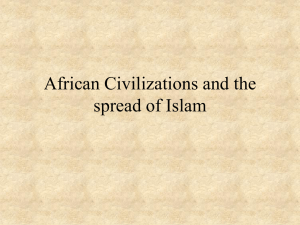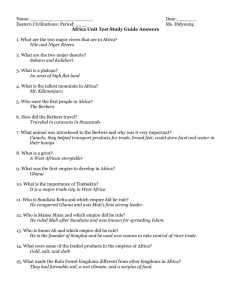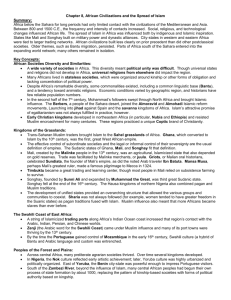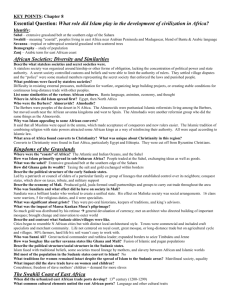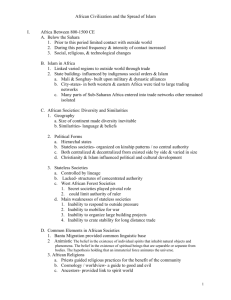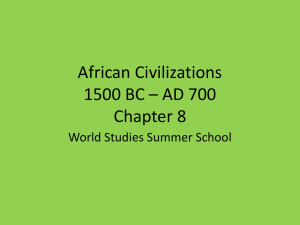CHAPTER 8: AFRICAN CIVILIZATIONS AND THE SPREAD OF ISLAM
advertisement
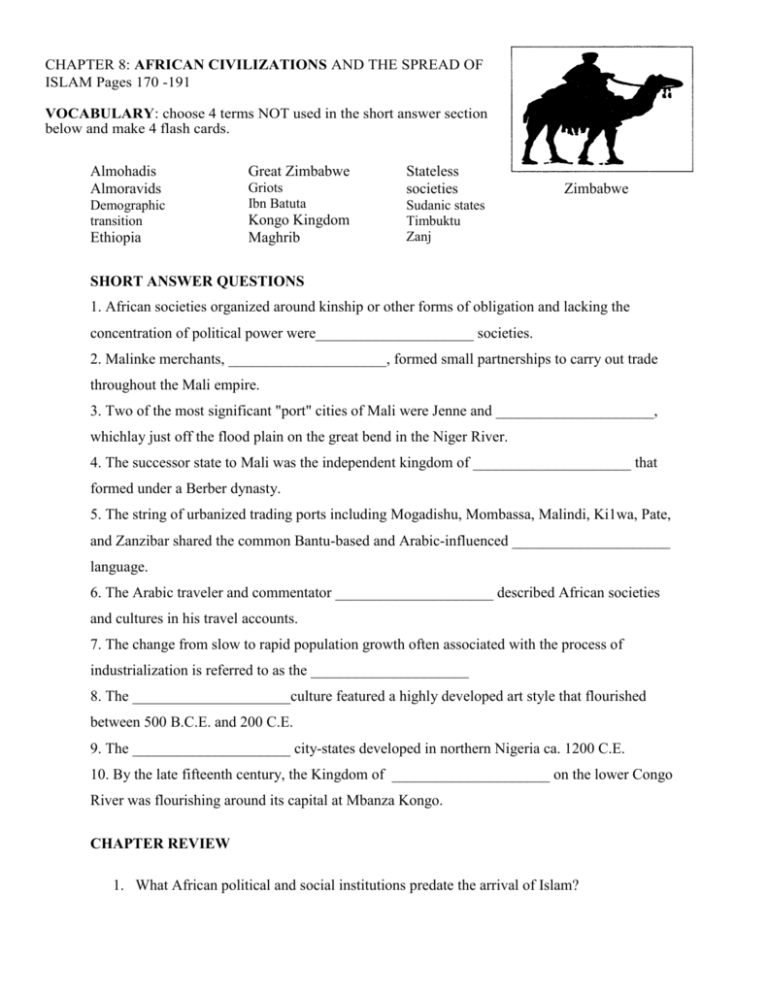
CHAPTER 8: AFRICAN CIVILIZATIONS AND THE SPREAD OF ISLAM Pages 170 -191 VOCABULARY: choose 4 terms NOT used in the short answer section below and make 4 flash cards. Almohadis Almoravids Demographic transition Ethiopia Great Zimbabwe Griots Ibn Batuta Kongo Kingdom Maghrib Stateless societies Zimbabwe Sudanic states Timbuktu Zanj SHORT ANSWER QUESTIONS 1. African societies organized around kinship or other forms of obligation and lacking the concentration of political power were_____________________ societies. 2. Malinke merchants, _____________________, formed small partnerships to carry out trade throughout the Mali empire. 3. Two of the most significant "port" cities of Mali were Jenne and _____________________, whichlay just off the flood plain on the great bend in the Niger River. 4. The successor state to Mali was the independent kingdom of _____________________ that formed under a Berber dynasty. 5. The string of urbanized trading ports including Mogadishu, Mombassa, Malindi, Ki1wa, Pate, and Zanzibar shared the common Bantu-based and Arabic-influenced _____________________ language. 6. The Arabic traveler and commentator _____________________ described African societies and cultures in his travel accounts. 7. The change from slow to rapid population growth often associated with the process of industrialization is referred to as the _____________________ 8. The _____________________culture featured a highly developed art style that flourished between 500 B.C.E. and 200 C.E. 9. The _____________________ city-states developed in northern Nigeria ca. 1200 C.E. 10. By the late fifteenth century, the Kingdom of _____________________ on the lower Congo River was flourishing around its capital at Mbanza Kongo. CHAPTER REVIEW 1. What African political and social institutions predate the arrival of Islam? 2. How did the arrival of Islam and Christianity affect African societies? 3. What internal developments and external contacts spread civilization in Africa? 4. Describe the rise and fall of African states and societies. 5. How did religion and trade connect Africa to a larger world; with what results? 6. Describe the intellectual accomplishments of the African and Bantu civilizations. Document Analysis: The Great Oral Tradition and the Epic Sundiata p. 178 1. Who wrote it? (Attribution includes biographical references) 2. What is the author’s point of view? Sundiata as the King 1. Describe the Sudanic qualities of being a king as represented by Sundiata. 2. What dies the iron represent and how is iron used in the epic? 3. Why would Sundiata need a griot? Sundiata and the Outside World 1. What evidence is there that Sundiata knew of the larger, non-Sudanic world? 2. What elements of animism and Islam are present in the story?
